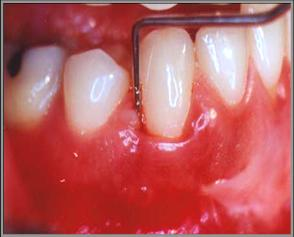Papillon–Lefèvre syndrome (PLS) is a rare genetic disorder characterized by a combination of palmoplantar hyperkeratosis and juvenile periodontitis.
Table of Contents
Introduction
Papillon–Lefèvre syndrome (PLS) is a rare genetic disorder characterized by a combination of palmoplantar hyperkeratosis and juvenile periodontitis. This syndrome significantly impacts the quality of life of affected individuals, leading to not only physical discomfort but also serious dental complications. Although the exact mechanisms underlying this condition remain elusive, understanding its implications, diagnosis, and management can aid healthcare professionals in providing better care for those affected.
Key Characteristics of Papillon–Lefèvre Syndrome
Palmoplantar Hyperkeratosis
A hallmark of PLS is the occurrence of palmoplantar hyperkeratosis, which manifests as thickened and scaly skin on the palms of the hands and soles of the feet. It typically develops in early childhood and can lead to various complications. Here are some essential points to understand:
- Appearance: The skin changes can start as small, localized patches and can expand over time, affecting larger areas.
- Symptoms: Individuals may experience pain, itching, and difficulty with mobility, particularly in severe cases.
- Treatment: While there is no definitive cure, emollients and keratolytic agents may be used to manage symptoms and improve skin condition.
Juvenile Periodontitis
In conjunction with hyperkeratosis, juvenile periodontitis often emerges as a prominent feature of PLS. The onset typically correlates with the development of hyperkeratosis, resulting in serious dental implications. The following points highlight key aspects of juvenile periodontitis in PLS:
- Timing of Onset: Dental development appears normal until hyperkeratosis appears, followed by rapid onset of aggressive gingivitis that leads to periodontitis.
- Impact on Teeth: Both primary (1°) and secondary (2°) teeth are affected, often resulting in tooth mobility and premature loss.
- Pathophysiology: While the precise mechanisms are not fully understood, the condition is believed to relate to immune dysregulation and inflammatory responses that accelerate tissue destruction.
1. Genetic Basis
Papillon–Lefèvre syndrome is primarily associated with mutations in the **CATSPER1 gene**, which encodes a protein involved in the function of immune cells. Understanding the genetic aspect of this condition is important for the following reasons:
- Inheritance: The syndrome is inherited in an autosomal recessive pattern, which means that both parents must carry the gene mutation for a child to be affected.
- Genetic Testing: Evaluating family history and conducting genetic testing can facilitate early diagnosis and management, particularly in patients with a known family history of PLS.
2. Immune System Correlations
Recent studies suggest that the immune system may play a critical role in the manifestation of PLS. Individuals often exhibit alterations in their immune response, contributing to the development of aggressive periodontitis:
- Inflammatory Response: Inflammatory markers can be significantly elevated, suggesting an underlying dysregulation in immune response that affects periodontal tissues.
- Potential for Treatment: Understanding these immune system anomalies may open avenues for targeted therapies aimed at modulating immune responses in affected individuals.
Diagnosis and Management
Clinical Diagnosis
The diagnosis of Papillon–Lefèvre syndrome is primarily clinical, focusing on the following:
- Medical History: A thorough history taking is essential to note the onset of hyperkeratosis and periodontal issues.
- Physical Examination: An assessment of the skin condition on palms and soles, coupled with dental evaluations, is critical.
- Direct Observation of Symptoms: Noticing early signs of periodontal disease in young children may prompt further investigation into PLS.
Multidisciplinary Approach
Managing Papillon–Lefèvre syndrome requires a multidisciplinary approach that includes:
- Dermatologist Consultation: For the management of skin lesions and ensuring comfort.
- Periodontist Intervention: Regular dental check-ups and interventions by a periodontist to manage periodontal health, including scaling and root planing.
- Nutritional Support: Nutritional counseling may be beneficial to reinforce overall health and oral hygiene.
Conclusion
Papillon–Lefèvre syndrome presents unique challenges due to the interplay of palmoplantar hyperkeratosis and juvenile periodontitis. By fostering a comprehensive understanding of these conditions' characteristics, underlying genetic factors, and the importance of timely diagnosis and management, healthcare professionals can significantly improve the quality of life for individuals affected by PLS. As research continues to explore the mechanisms behind this syndrome, it is hopeful that targeted therapies may emerge, facilitating better outcomes for those living with the condition. In this era of advanced medicine, awareness, and early intervention remain key to managing Papillon–Lefèvre syndrome effectively.
Tags
syndromes


